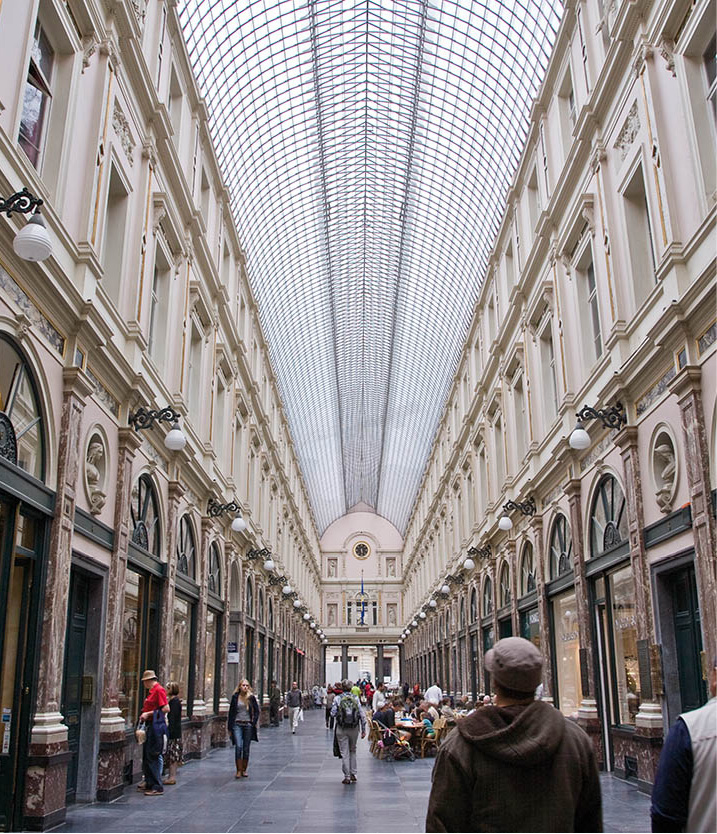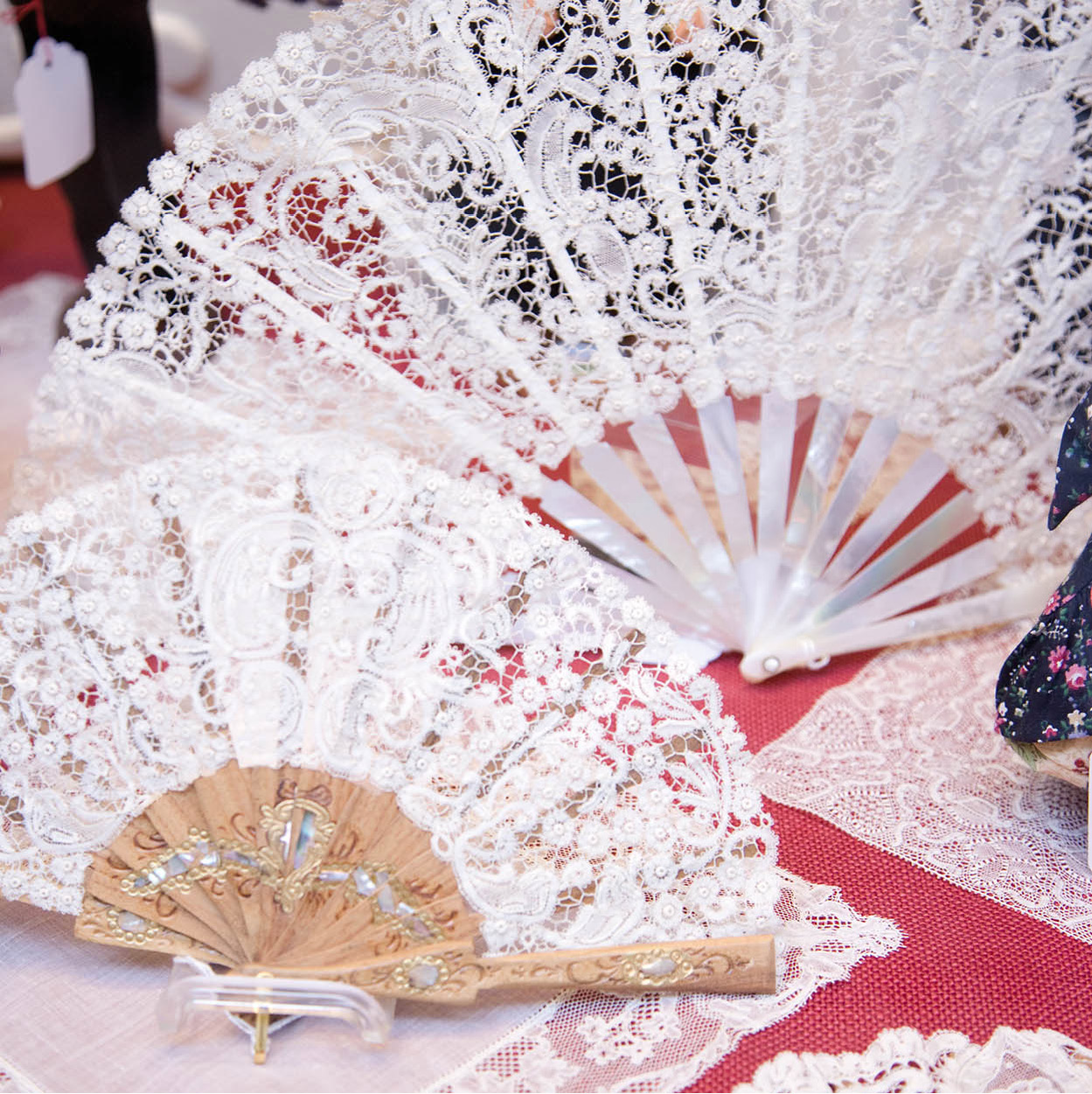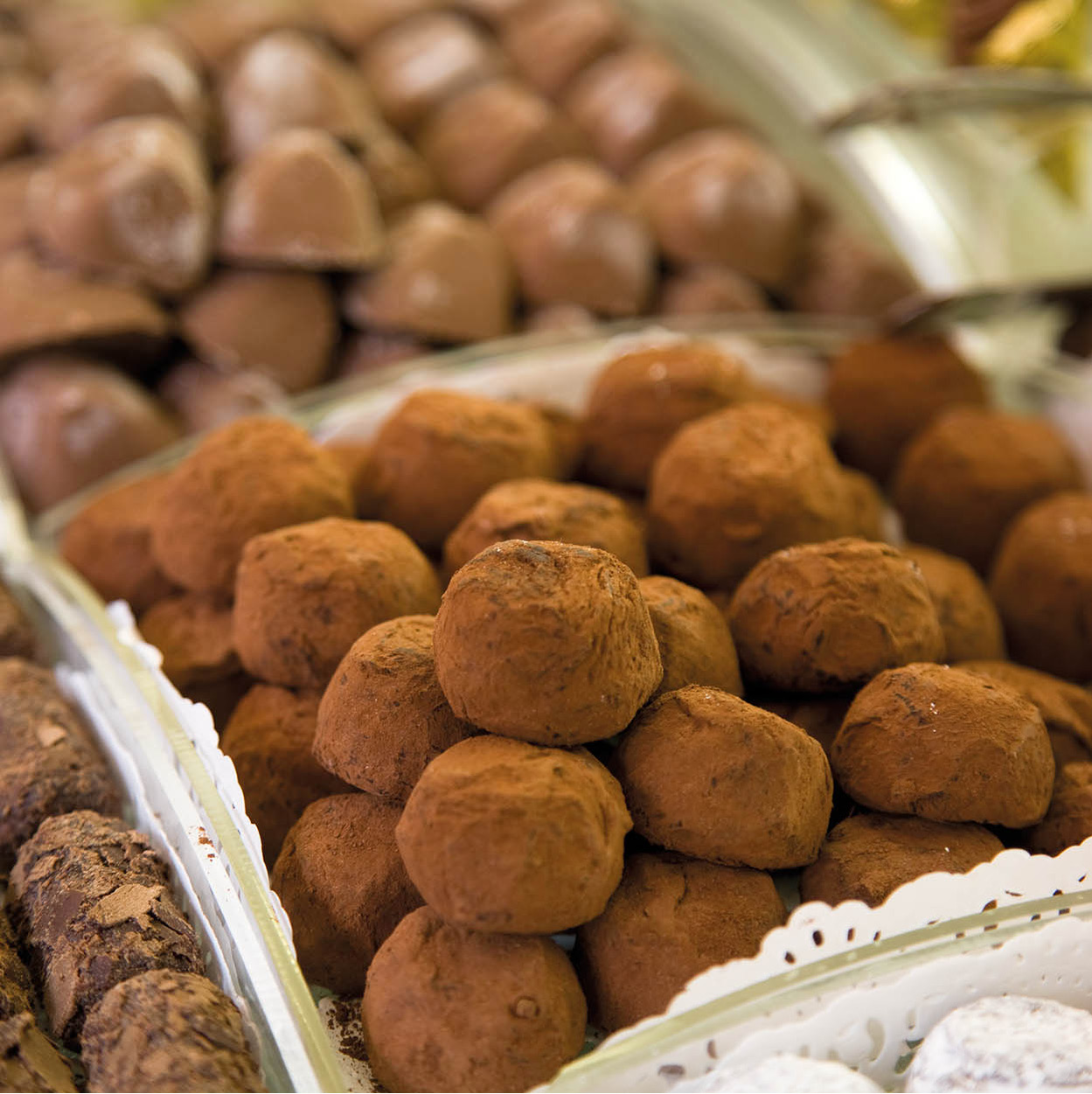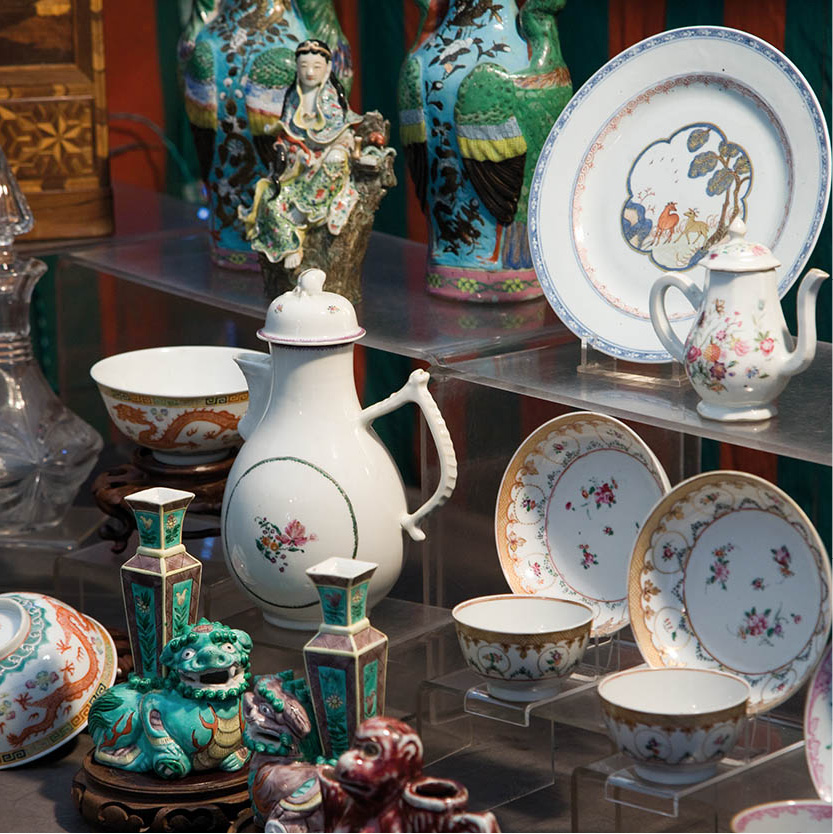In addition to hundreds of things to see, Brussels also has lots to do, with several important performance venues, a plethora of bars and some delightful shopping opportunities.
Shopping
Though there are no ‘zones’ as such, certain districts do have a greater density of certain speciality shops. The streets around the Grand-Place are filled with shops selling cheap knick-knacks, T-shirts, mugs and keyrings–all the usual budget tourist remembrances but also handmade lace, pralines and crystal. For antiques, head towards the Sablon area, where there are also some excellent art galleries. The weekend antiques market in place du Grand-Sablon is noted for quality items, if not for bargain prices. For bric a brac, head to the flea market at place du Jeu-de-Balle in the Marolles – a veritable treasure trove of memorabilia, furniture, porcelain and glassware. For secondhand and rare books, try Galerie Bortier, uphill from the Grand-Place, whose stores have a huge collection.
For haute couture, visit avenue Louise, the nearby Porte de Namur and the several galleries in between, where fine boutiques and department stores are full of the best European and Belgian fashions. For a selection of high fashion in the centre of town, visit the Galeries Royales St-Hubert (www.grsh.be), built in the 1840s, where Delvaux has its signature store. For modern fashions, try rue Antoine Dansaert, across from the Bourse. Further out, boulevard de Waterloo has numerous good stores along its length.
High-street fashion and all the best-known European names can be found on rue Neuve, to the north of place de la Monnaie. If it’s raining, make for the nearby modern shopping malls of Centre Anspach (www.anspach-brussels.be) and City2 (www.city2.be), the largest in Brussels. Stamps and coins can be found in numerous shops in the narrow streets around rue du Midi, a few blocks south of the Grand-Place.

Galeries Royales St-Hubert
Julian Love/Apa Publications
Lace Society
Belgium has a tradition of making lace – a threadwork of silk, linen or cotton – that stretches back to the 16th century in Flanders. Brussels and Bruges are the principal sales points. Beware of cheap machine-made and imported imitations, unless you want only a simple souvenir. Belgian handmade lace is expensive, but if you like lace this is the only sort worth buying. It should always be purchased from a reputable shop and clearly labelled as having been handmade in Belgium.
What to Buy
With a tradition of trade guilds going back to the Middle Ages, it should not be surprising that Brussels still excels in many crafts. Artistic inspiration takes a number of forms, and as you walk along the city streets, there is sure to be something to catch your eye.
Lace. The women in Brussels’ béguinages and its ladies of the court spent many hours creating fine lace, which adorned clothing and ceremonial garments. Nowadays, this lace is used to decorate handkerchiefs, napkins, table linens and special items such as christening gowns. Prices vary greatly between machine-produced lace and hand-worked items; knowledgeable sales assistants will help by explaining the different qualities of the pieces on display.

Traditional lace items
Julian Love/Apa Publications
Tapestry. Belgium was renowned for its tapestry-making during the reigns of the Burgundians and the Habsburgs. The enormous tapestries designed for the ruling families incorporated gold and silver thread and were considered so valuable that they were classed as part of the royal treasury. Today, the tradition continues, but, as with lace, much of the tapestry on sale is machine-produced. Handmade work is exquisite but it comes at a high price. You can buy traditional items such as wall coverings or more modern items such as luggage, clothing, or soft home furnishings (cushions and curtains).
Books and antiques. For many years Brussels sat on a major trading route, and it is clear from the range of items available in antique and antiquarian bookshops that goods found their way to Belgium from all across Europe, and later, the colonies. Furniture from England and France sits alongside glass from the Habsburg Empire of Eastern Europe. Prices are steep, but the level of expertise in stores around place du Grand-Sablon is equally high.
Silver and jewellery. Jewellers to the royal court produced beautiful pieces, and today’s gold- and silversmiths continue in the same fashion.
Art. Commercial galleries feature the work of established artists and newcomers in a range of genres. You can also buy original cartoon fiches from heroes of the celluloid screen, such as Hergé’s Tintin. A good starting point is the Belgian Comic Strip Centre in rue des Sables (for more information, click here).
Stamps and coins. A collection of the world’s stamps and coins can be found in small dusty shops around the city. There may be something for your collection here, or you can sell or swap your stamps.
Delvaux handbags. These have been at the height of Belgian fashion for many years. Their simple lines and excellent construction have made them very popular among well-heeled, stylish women in Europe.

Rich and delicious Belgian chocolates galore
Julian Love/Apa Publications
Edibles. The delightful chocolate and pralines produced in Belgium are available all across town in presentation boxes for you to take home. Dandoy has been producing speculoos biscuits for several generations; you’ll find their main shop on rue au Beurre, just off the Grand-Place (www.maisondandoy.com). Alternatively, try Marcolini, on rue des Minimes, in the Sablon district, for hand-produced chocolates (www.marcolini.be). Beer is, of course, another option. With hundreds of different types to choose from, you’ll need to do some thorough research before making your choice. Many beer retailers have selections ready for you to take home.

Antique market, place du Grand-Sablon
Julian Love/Apa Publications
Entertainment
With more than 30 venues for the performing arts in the city, there will likely be a wealth of performances taking place, by both local and visiting companies, whatever time of year you visit. The galleries of Brussels host a huge number of temporary exhibitions of art from around the world. The Visit Brussels website (http://visitbrussels.be) has an extensive section on cultural events in the city. You can also download a free Visit Brussels app to find out what’s on.
Theatre and Music
When the museums close at night, Brussels takes on a different character. There are several prominent theatres around the city, including the Théâtre Royal de la Monnaie (place de la Monnaie; tel: 02-229 1211, www.lamonnaie.be), where the seeds of the ‘Belgian Revolution’ were sown in 1830. It continues to be a major venue, with a programme of opera and ballet. The Théâtre National de la Communauté Française (boulevard Emile Jacqmain 111–15; tel: 02-203 4155, www.theatrenational.be) produces strong performances. Théâtre des Martyrs (place des Martyrs 22; tel: 02-223 3208, www.theatredesmartyrs.be), is a converted cinema that is home to the Théâtre en Liberté company. The elegant Théâtre Royal du Parc (rue de la Loi 3; tel: 02-505 3030, www.theatreduparc.be) puts on mainstream theatre. Modern theatre and dance are at Théâtre Varia (rue du Sceptre 78; tel: 02-640 3550, www.varia.be). For a light-hearted view of theatre, try the Théâtre Royal de Toone (Impasse Ste Pétronille, rue du Marché-aux-Herbes 66; tel: 02-513 5486, www.toone.be), a puppet theatre that has been operated by the same family since 1830. They perform classical plays and local folk tales with marionettes.

Théâtre Royal de Toone
Bigstock
Classical music venues in Brussels include the glasshouses of Le Botanique (rue Royale 236; tel: 02-218 3732, www.botanique.be) and the Palais des Beaux-Arts (rue Ravenstein 23; tel: 02-507 8200, www.bozar.be), which is now known as BOZAR, and which hosts the Queen Elisabeth Music Competition (held on three out of every four years), as well as numerous concerts. The largest venue is Forest National south of the city, with an 8,000-seat capacity (avenue Victor Rousseau 208; tel: 03-400 6970, www.forest-national.be), which stages pop concerts by international names. For up-and-coming performers, try the Ancienne Belgique (boulevard Anspach 110; tel: 02-548 2484, www.abconcerts.be).
Nightlife
Of the three cities featured as excursions in this guide, Antwerp has by far the most nightlife and entertainment options, followed by Ghent and Bruges, in that order.
Brussels’ nightlife scene unfolds in a variety of locations around the city. Some of the best traditional bars are within easy walking distance of the Grand-Place. Hip bars and clubs nestle in the St-Géry and rue Antoine Dansaert areas, and around place du Châtelain, just off avenue Louise, south of the city centre. For African rhythms, head to the Matongé quarter around Porte de Namur. Gay bars and clubs are clustered around rue des Grands Carmes and rue du Marché au Charbon, close to the Bourse. A slightly older, well-heeled crowd head to avenue Louise and boulevard de Waterloo.
In the Marolles district, Bazaar (rue des Capucins 63; www.bazaarbrussels.com) is a colourful nightclub that serves up a variety of dance styles. A perennially hot venue for techno and house, and with dedicated gay and lesbian evenings, is Le Fuse (rue Blaes 208; www.fuse.be). A location close to the Grand-Place, a commitment to house and funk, and regular gay evenings are what keep Le You Night Club (rue Duquesnoy 18; www.leyou.be) in the running for hottest venue in town. The sophisticated Mirano Continental (chaussée de Louvain 38; www.mirano.be) has kept up with the latest trends over the decades. Hot-blooded types get to look cool at the Cartagena Salsa Bar (rue du Marché au Charbon 70; www.cartagenasalsabar.be). For a retro disco party head to the Nostalgia Club (rue de la Fourche 49–51; www.nostalgia-club.be).
In its multitudes of cafés (bars) are where Brussels may be fairly said to live. Among the traditional places that have stood the test of time are À la Mort Subite (rue Montagne aux Herbes Potagères; www.alamortsubite.com), La Fleur en Papier Doré (rue des Alexiens 55; www.lafleurenpapierdore.be) and Au Bon Vieux Temps (impasse St-Michel, rue du Marché aux Herbes 12). All three are close to the Grand-Place. For all its old-fashioned elegance, Le Corbeau (rue St-Michel 18; www.lecorbeau.be) has a youthful appeal, especially at weekends, when dancing on the tables is not unheard of. L’Archiduc (rue Antoine Dansaert 6; www.archiduc.net) can be almost painfully chic at times, but it puts out some cool jazz at weekends. One of the city’s liveliest gay bars is Chez Maman (rue des Grands Carmes 7; www.chezmaman.be). Mappa Mundo (rue du Pont de la Carpe 26; www.mappamundo.com) is popular with singles.
Festivals
Brussels holds the Ommegang early in July each year, a festival commemorating the time in 1549 when the guilds and Chambers of Rhetoric, as they were called, paraded their pennants before Emperor Charles V. The modern bearers of the head of the guilds dress in costumes of the mid-1500s and carry the banners and pennants of their trades around the Grand-Place (www.ommegang.be). The Carpet of Flowers is a biennial celebration held in mid-August in the Grand-Place, when a huge elaborate tapestry of begonias almost fills the square (www.flowercarpet.be).

Ommegang parade
iStock
In Bruges, the Procession of the Holy Blood (Heilig-Bloed-processie) takes place usually in the latter part of May each year (on Ascension Day, the fifth Thursday after Easter). The most holy relic of the cathedral, said to contain a drop of Christ’s blood, is paraded around the city.
Sports
With over 30 sq m (320 sq ft) of green space for each resident of Brussels, and a surrounding landscape without any appreciable hills, it is easy to understand why sports are a big part of the city’s life.
Cycling. This is a popular sport, though not in the centre of Brussels, where there are a number of deceptive inclines to watch out for (to say nothing of the dangerous traffic conditions). In the suburbs and through the forests there are cycle routes and some urban areas have cycle lanes. It is easy to rent bikes–many railway stations have a bike hire office. Don’t forget to wear a cycling helmet.
Football. This is a passion in Belgium, as in most other European countries. Royal Sporting Club d’Anderlecht is one of the most successful teams, with a respectable international history to its credit. For details, contact the stadium at avenue Théo Verbeeck 2, Anderlecht (tel: 02-529 4067, www.rsca.be). The season runs from September to May. The National Stadium (Stade Roi Baudouin) is at Heysel. It holds international games, cup finals, and other national sporting events (tel: 02-474 3940, www.prosportevent.be).
Horse-riding. The Bois de la Cambre and Forêt de Soignes have bridleways for horse-riding.

The lake at Tervuren
Olivier van de Kerchove/Visit Brussels
Jogging and running. Both are popular, and you are sure to see people taking a turn around the parks. The Brussels Marathon takes place in October.
Leisure centres. Because the weather in Belgium is often inclement, there are many covered sports complexes in Brussels. The Centre Sportif de Woluwe-Saint-Pierre, avenue Salomé 2 (tel: 02-773 1820, www.sportcity-woluwe.be), has squash, outdoor and indoor tennis, a swimming pool, sauna and Turkish bath.
Walking. The leafy Forêt de Soignes is the perfect place for forgetting the city and surrounding yourself with birdsong. There are marked routes for walkers.
Water sports. There’s rowing and pedalo rides on local lakes. Visit the lakes at Tervuren, Bois de la Cambre and Forêt de Soignes.

A miniature reproduction of the Town Hall in Leuven at Mini-Europe
Shutterstock
Brussels for Children
At first glance, Brussels may not seem the best place to take children. However, the city reveals some interesting and entertaining things that are bound to keep your children happy. Carriage rides are great fun, allowing children to rise above the sea of heads for a better view. These take place in Brussels, Antwerp and Ghent during the summer, and in Bruges all year round. You can take a canal or river cruise in Antwerp, Bruges and Ghent.
The Bruparck complex in the northern Heysel district (boulevard du Centenaire 20; tel: 02-474 8383, www.bruparck.com) has several attractions. Mini-Europe (tel: 02-478 0550, www.minieurope.eu) is the ‘child-size’ attraction, and is both fun and educational. The eruption of Vesuvius is probably the most popular, with its ground-shaking power.
Many of Brussels’ museums have attractions that are specifically designed with children in mind. The Musée des Sciences Naturelles (Natural Sciences Museum; rue Vautier 29, tel: 02-627 4211, www.naturalsciences.be), with its dinosaurs to enthrall young imaginations, has special activities and workshops for children aged 4–12 years. Covering a subject close to many children’s hearts – comic strips – is the Centre Belge de la Bande-Dessinée (rue des Sables 20, tel: 02-219 1980, www.comicscenter.net). The Dynamusée, Parc du Cinquantenaire 10 (tel: 02-741 7218, www.kmkg-mrah.be) in the Cinquantenaire complex offers special activities for children aged 6–12 years, and the Musée des Instruments de Musique (Musical Instruments Museum, Montagne de la Cour 2, tel: 02-545 0130, www.mim.be) offers multi-sensory experimentation with sound, along with training courses and workshops. The Musée des Enfants (Children’s Museum, rue du Bourgmestre 15, tel: 02-640 0107, www.museedesenfants.be) operates a regular programme of sessions involving painting, collage, woodworking and theatre for young children.
Many activities specifically for children are conducted in French and Dutch. For details of programmes in English, contact each organisation directly.
The parks and forests provide perfect environments in which to walk, cycle or ride. The lake at Tervuren has boats for hire. If you prefer something more relaxing, take a rug and a picnic and just enjoy the sunshine; don’t forget to take some bread to feed the ducks and geese.
If you need a break from the city’s sights and sounds, then try Walibi (boulevard de l’Europe 100, Wavre, tel: 010-421500), situated 19km (12 miles) southeast of Brussels. The huge Walibi theme park has rides with spirals, catapults, river rapids and numerous theme attractions. The attached Aqualibi water park has cascades, whirlpools and jungle experiences (tel: 010-4216 03). There are many opportunities for refreshment, so you can spend the whole day here. (To reach the theme park by car, take the E411 and leave at the Brussels Namur exit; by train, take the Ottignies/Louvain-la-Neuve line, get off at Bierges station, which is only 150m/165yds from the park entrance.)
Castles always spark the imagination and the Gravensteen (Castle of the Counts, Sint-Veerleplein, tel: 09-266 8500, www.gravensteengent.be) in Ghent is no exception. Images of sword fights on the battlements and prisoners in the dungeons flash through the mind.